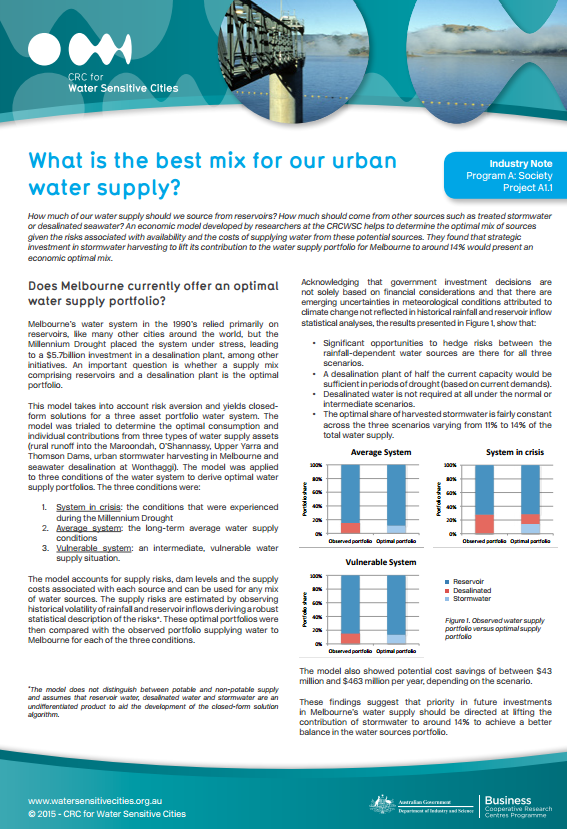New publication: What is the best mix for our urban water supply?
How much of our urban water supply should we draw from reservoirs? How much should come from other sources such as harvested stormwater or desalinated seawater?
As part of the Cities as Water Supply Catchments – Economic Valuation project (A1.1), CRCWSC researchers at Monash University have released an industry note aimed at addressing these questions. The researchers used a closed-form solution mathematical model to determine the best mix of sources given the water availability risks and costs of supplying water from potential sources.
The study demonstrates that appropriately hedging supply risks across the naturally occurring water sources potentially could reduce the need to invest in more expensive options such as desalination or recycled water.
The model, when applied to Melbourne’s water supply system, found there had been an underinvestment in stormwater harvesting and overreliance on the anticipated need for desalinated water. “It is estimated that the adoption of an optimal water supply portfolio would have resulted in cost savings of between $43 million and $463 million per year”, the authors said.
The authors acknowledged that “investment decisions made by governments are not necessarily solely based on financial considerations and that there are emerging deep uncertainties in meteorological conditions attributed to climate change that will not be reflected in statistical analyses of historical rainfall and reservoir inflow.”
Click here for the industry note.
